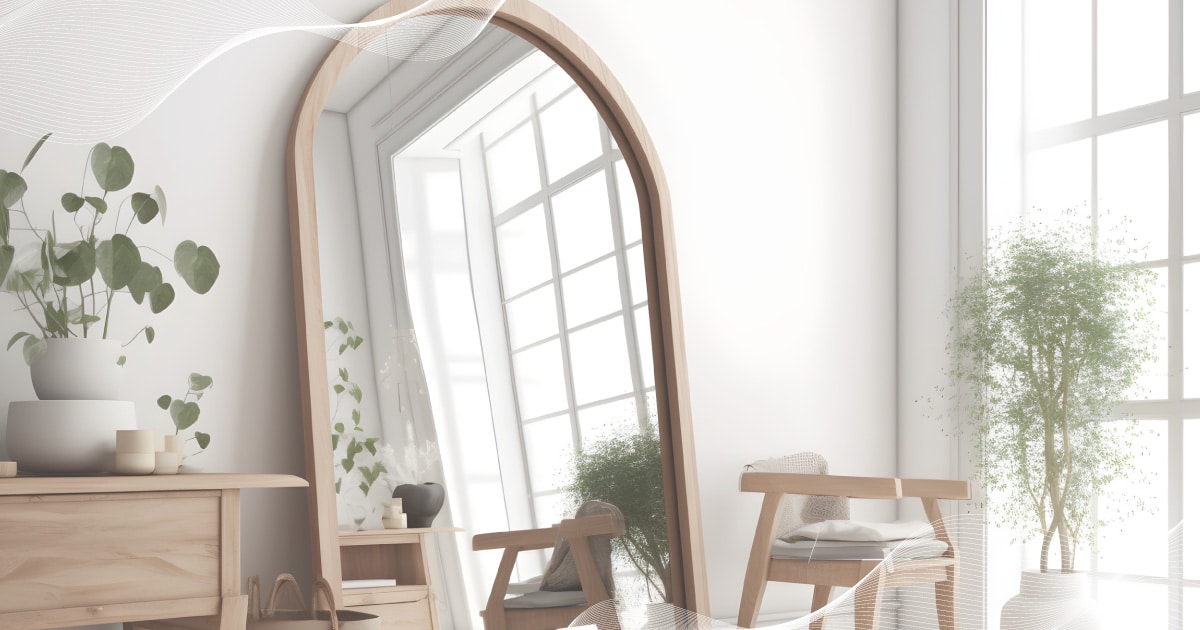Home Energy Efficiency Tips: Creative Ideas for Brightening a Room - NEC Coop
Jul 24, 2023 — Electric Tips at Home, Resources

Some houses have a certain charm that makes them feel very cozy and inviting, despite having the same architectural designs. The key lies in a combination of factors, including color schemes, furniture arrangement, lighting choices, and the smart use of natural light.
Choosing an appropriate color scheme for the walls can have a significant impact on your room’s ambience. The great news is that by observing some simple principles for color palettes, anyone can create a brighter and cozier atmosphere in their home, all while potentially reducing energy costs.
If you are a do-it-yourself enthusiast looking to enhance the brightness of your living space or transform a dim room to make it feel lighter, read on. This guide will provide you with great tips on how to brighten a room lacking in natural light along with suggestions on how to choose paint colors for home energy efficiency.
Turn each window into a focal point
By simply rearranging your furniture, you can maximize the available light in your space. Strategically position and arrange the room so that the window becomes the primary point of focus upon entering. By doing this, you’ll create the illusion of natural light, even if the actual amount that enters the room is limited.
When it comes to your lampshades, make it simple
While patterned and customized lampshades can be visually appealing, they might not be the best option for spaces lacking natural light. Choosing bright white lampshades can give your space a bright and airy feel.
Take advantage of the power of mirrors
Mirrors serve a purpose beyond last-minute touch-ups. They can be helpful in brightening a dim room.
Consider placing mirrors strategically near light sources, such as windows or lamps. This will not only visually enlarge the space but also maximize the available light by reflecting and distributing it throughout the room. Enhance the ambience with warm, energy-efficient LED light bulbs, which give a nice radiance and depth. To amplify the brightness in the room, position mirrors across these artificial light sources.
Choose light or white paint colors
The choice of interior paint color can significantly transform a space. Warm hues add vibrancy and a cozy atmosphere, while cool tones create a sense of serenity and tranquillity. Dark shades can add elegance and richness to a room. On the other hand, light colors have the remarkable ability to make a space feel open and spacious. Also, light hues are excellent at reflecting light within a room.
For an instant room-brightening effect, consider painting the walls and ceiling in a light color.
Choosing Paint Hues for an Energy-Efficient Home
Surprisingly, the color scheme of your home can have an impact on its energy efficiency. The colors you choose for your walls can influence the room temperature and affect your perception of warmth or coolness.
Heat energy and light energy follow similar principles. The law of conservation of energy reveals that certain objects and colors reflect varying amounts of light waves, resulting in different heat absorption capabilities. Some objects and colors reflect and absorb more heat than others.
Dark colors, particularly black, have a higher heat absorption capacity due to their ability to absorb a greater amount of light. On the contrary, light colors have a lower heat absorption capacity.
If you were to paint a room that receives plenty of natural light and has a few windows with dark-colored paint, the sunlight would be absorbed and retained by those darker walls, increasing the room’s temperature longer.
For instance, during a hot and humid summer day in Texas, the same room painted with dark colors would feel significantly warmer compared to a room painted in white. As a result, you may need to rely on air conditioning for longer periods or set it at a higher temperature. This increased energy use for cooling could lead to higher energy bills. However, in cooler seasons like early spring, winter, or late fall, darker walls can help retain warmth when they receive sunlight. A light color palette creates an illusion of brightness, spaciousness, and openness. These colors have excellent light reflection properties, allowing you to delay turning on lights until later in the day and switch them off earlier in the morning, helping you conserve energy and reduce electricity costs.
Paint colors are assigned a light reflectance value (LRV), which indicates how much light they reflect. Higher LRV values suggest greater light reflection.
If you prefer deep and dark colors but live in a hot climate, don’t worry. A compromise can be achieved by creating an accent wall, painting one wall in a dark shade while keeping the others light and vibrant. You can also incorporate darker furniture, light fixtures, and furnishings to align with your personal tastes.
Enhance your home’s ambience today
Now that you know how to take advantage of natural light and how to brighten any room, you are now ready to transform your living space.
Color schemes play an important role in your home’s energy efficiency and overall ambience. It’s important to consider the amount of incoming light and the color choices that complement different moods. By following these tips, you can effectively bring more light into your space, regardless of its size, and create a brighter and more inviting atmosphere.
Sources:
“How to Brighten a Dark Room: 10 Creative Ideas,” The Spruce, https://www.thespruce.com/brighten-a-dark-room-2213441
“How to Brighten a Dark Room in 10 Creative Ways,” Lazy Loft, https://blog.froy.com/how-to-brighten-a-dark-room-in-8-ways/
“What Colors Absorb More Heat?” Sciencing, https://sciencing.com/colors-absorb-heat-8456008.html
“How Interior Paint Colors Affect Your Energy Savings,” Easy Breezy AC, https://www.easybreezyac.com/how-interior-paint-colors-affect-your-energy-savings/
“What is LRV?” Diamond Vogel, https://www.diamondvogel.com/architectural/blog/what-is-lrv
Voted #1 Electric Provider
We were recently voted the #1 Electricity Provider by the Corpus Christi Caller-Times’ Best of the Best Awards for the 7th year running!
Benefits of Membership
As a member of our co-op, you’ll enjoy the following benefits:
- You’ll get a share of our profits.
- You won’t be locked into a long-term contract.
- You’ll get a simple, competitive rate with no surprise fees or markups.
- You can get a $50 bill credit for every new member you refer.

